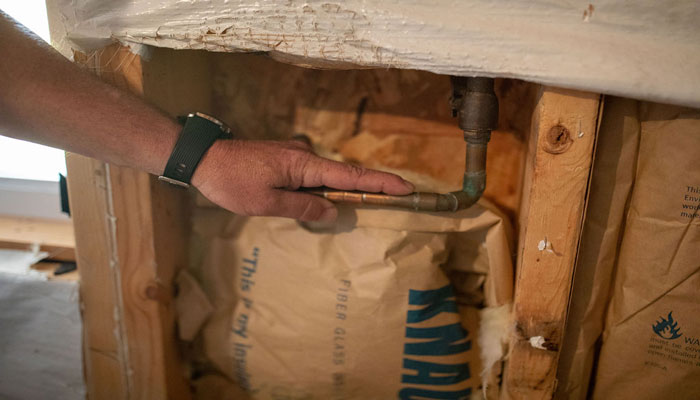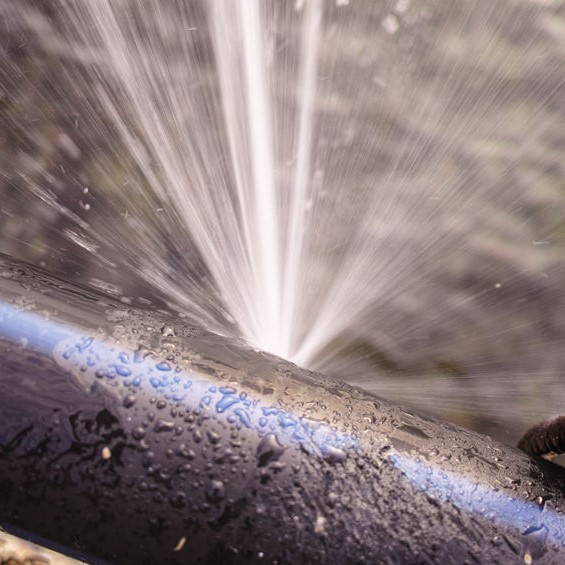From Detection to Correction: A Fast Approach to Handling Burst Pipes
From Detection to Correction: A Fast Approach to Handling Burst Pipes
Blog Article
This post below in relation to How to Prepare for Your Dishwasher Installation is rather enlightening. Read on and make your own ideas.

A ruptured pipe is a major emergency; you can just stand as you view water you pay a lot to reunite with the planet. In worse situations, you notice a swimming pool on your cooking area floor, which is a wonderful trip threat, especially if you have youngsters around. If the pipe that burst remained in your walls, problem: you might need to paint that entire section.
Just how can a calamity like a ruptured pipeline be protected against and taken care of? Well, by listening to your specialist emergency plumbings as well as adhering to these guidelines.
Just how do I understand when my pipelines have burst?
Changing water pressures
Pipes do not simply burst in a day. You may have observed that your kitchen tap or shower does not run instantly when you transform the tap. It may stop briefly for a couple of seconds and afterwards blast you with even more pressure than usual.
In other circumstances, the water might seem normal initially, after that decrease in stress after a few seconds.
Polluted water
Many individuals assume a burst pipe is a one-way outlet. Rather the contrary. As water spurts of the hole or gash in your plumbing system, contaminants discover their method.
Your water might be polluted from the resource, so if you can, check if your water storage tank has any kind of problems. Nevertheless, if your drinking water is supplied as well as purified by the local government, you should call your plumber quickly if you see or smell anything funny in your water.
Puddles under pipes as well as sinks
When a pipeline ruptureds, the discharge creates a pool. It might show up that the puddle is growing in size, and no matter how many times you mop the puddle, in a few mins, there's one more one waiting to be cleaned up. Typically, you may not have the ability to map the puddle to any noticeable pipelines. This is a sign to call a professional plumber.
Damp walls and water discolorations
Prior to a pipe ruptureds, it will certainly leak, most times. If this relentless dripping goes undetected, the leakage may graduate into a wide gash in your pipe. One easy means to prevent this emergency is to look out for wet walls ad water stains. These water stains will certainly lead you right to the leakage.
Untraceable trickling sounds
Pipeline ruptureds can take place in one of the most undesirable places, like within concrete, inside walls, or under sinks. When your home goes silent, you may have the ability to listen to an aggravatingly relentless trickling sound. Also after you have actually examined your shower head and kitchen tap, the dripping may continue.
Precious visitor, the leaking might be coming from a pipeline inside your walls. There isn't much you can do about that, other than inform a specialist plumber.
Show up the Warmth
Establish fans to blow warmth into cold spaces. Maintain the garage door shut. If you have actually lowered water circulation, heat the most vulnerable pipes (typically in basements as well as crawl spaces or near exterior walls) with a hair dryer. Leave the faucet on while you apply warm. As you thaw ice, the circulation will certainly boost. To avoid pipelines from cold, protect your wall surfaces.
Begin Getting Rid of the Water
Grab the mop, buckets and a shop vacuum to start to get rid of the water because you certainly do not desire it saturating right into every little thing else in your home. Plus, a quick clean up will lower the opportunities of something obtaining moldy.
What do I do when I find a burst pipe?
Your water meter will continue to run even while your water wastes. To reduce your losses, discover the primary controls as well as turn the supply off. The water mains are an above-ground structure at the edge of your home.
How to Fix & Detect a Leaking Pipe
How Do I Know if a Pipe is Leaking?
Leak detection tests can help you determine if your pipe has a leak. Even if you don’t see an apparent leak, you should still conduct leak detection tests regularly to save water and money—and prevent major damage to your home.
Water meter. It can be helpful to figure out what your usual water meter usage numbers are and then monitor them regularly. To monitor your meter, first, turn off all water faucets in your home. Check the meter and write down the numbers. In a few hours, check the meter again. If the numbers have changed, you have a leak. Water gauge. Use a water gauge to test your water pressure. Your showerhead should produce a certain amount of water pressure based on its model and design. If the pressure is lower than it is supposed to be for that specific showerhead, your home likely has a leak. Puddles. Look inside your bathroom, laundry, and kitchen sink cabinets. Puddles around the cabinets or around toilets, tubs, showers, and washing machines indicate the presence of a leaking pipe. You may also notice loose tiles, peeling or flaking paint, or mold caused by water accumulation. Napkin test. Even if you don’t see any puddles, you may still have a leak. You can test for water leaks in the bathroom, laundry, and kitchen by wiping below-sink connections with a napkin, paper towel, or piece of toilet paper. If it becomes damp, you probably have a leaking pipe under the sink. Discolored walls. Walls that are discolored—usually with brown or yellow stains—or bulging might mean that they have been impacted by water damage caused by a leaking pipe. Smell. A leaky pipe will create sitting water, and over time, that water may develop a musty smell. If your home smells musty, but you can’t locate the source, it may be due to a leak. Steps for Fixing a Leaking Pipe
A leaky drain can be remedied by tightening the pipe base, replacing the drain seal, caulking the rim, and tightening the pipe nut. Similarly, a leaking toilet pipe can be treated by tightening the packing nut. You may also need to replace the valve. A leaky faucet may just need tightening or replacement of the washers. If that doesn’t work, consider replacing your faucet. If your pipe has a hole in it, you may want to use a pipe leak sealer or pipe leak tape. This quick fix for water pipe leaks can also temporarily fix a copper pipe leak. https://www.ahs.com/home-matters/quick-tips/how-to-tell-if-pipes-are-leaking/

We had been shown that write-up on How to install a dishwasher safely from an associate on a different domain. Sharing is nice. One never knows, you may just be helping someone out. I treasure reading our article about What to Know Before Installing a Dishwasher.
Book Appointment
Report this page